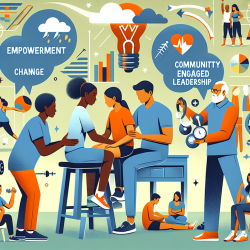Understanding the Impact of Police Contact on Sexual Minority Youth
As practitioners dedicated to improving outcomes for children, it is crucial to integrate evidence-based practices into our work. The recent study titled Policing Sexuality: Sexual Minority Youth, Police Contact, and Health Inequity offers valuable insights into the disparities faced by sexual minority (SM) youth in terms of police contact and its subsequent health implications. By understanding and applying these findings, we can better support the mental and physical well-being of LGBTQ youth.
Key Findings from the Study
The study analyzed a nationally representative cohort of over 15,000 U.S. young adults, examining police contact histories from ages 18-25. The findings revealed that SM youth are disproportionately affected by police contact compared to their heterosexual peers. Specifically, SM youth had:
- 1.86 times the odds of ever being stopped by police.
- Were stopped 1.60 times as often.
- Were stopped at younger ages.
These disparities were particularly pronounced among young SM women, highlighting the need for targeted interventions.
Implications for Practitioners
Given the heightened police contact among SM youth, practitioners in healthcare, education, and social services should take proactive steps to address these inequities. Here are some recommended actions:
- Screen for Police Contact: Incorporate questions about police interactions into assessments to identify youth who may be at risk of adverse health outcomes due to police contact.
- Combat Stigma: Work to dismantle homophobic and criminal legal system stigma within your practice. This can be achieved through staff training and creating inclusive environments.
- Provide Supportive Interventions: Develop interventions that address the psychological sequelae of police contact, such as anxiety and depression, and promote coping strategies.
The Need for Further Research
While the study provides a robust foundation, there is a critical need for more data on LGBTQ communities' interactions with the criminal legal system. Future research should focus on:
- Longitudinal studies to track the long-term health impacts of police contact on SM youth.
- Exploring the role of race/ethnicity in shaping these experiences, as the current study's small sample sizes limited the ability to draw firm conclusions.
- Developing and testing interventions that specifically address the unique needs of SM youth in the context of police contact.
By prioritizing these areas, we can work towards preventing the causes and consequences of sexual orientation-based health inequities.
Conclusion
As practitioners, it is our responsibility to leverage research findings to improve the health and well-being of the populations we serve. By addressing the disparities highlighted in this study, we can contribute to more equitable health outcomes for SM youth. For those interested in delving deeper into the research, I encourage you to read the original paper: Policing sexuality: Sexual minority youth, police contact, and health inequity.










